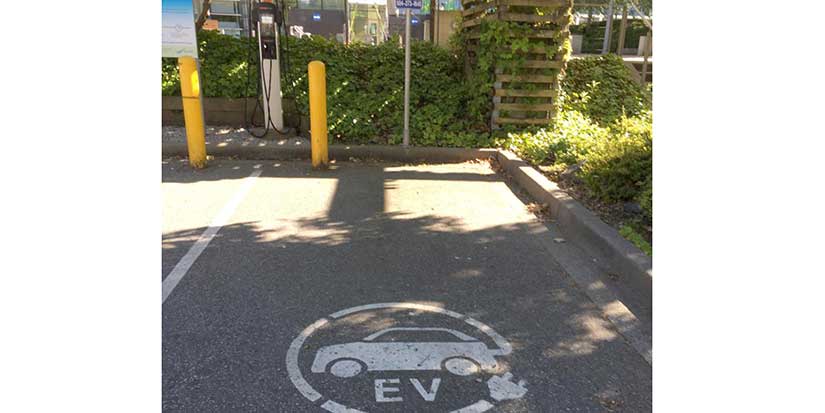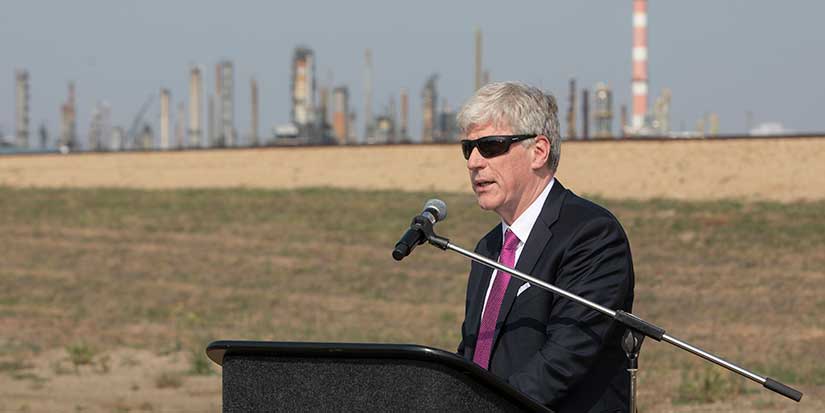Latest News
Electric vehicle stations charging up Richmond’s future

By Samuel Cheng
Published 12:41 PDT, Thu August 18, 2022
—
More and more electric vehicle (EV) charging stations are springing up in Richmond.
With people becoming more environmentally conscious, electric vehicles have taken the world of cars by storm.
“The transition to zero-emission vehicles is a key strategy under the city’s Community Energy and Emissions Plan,” says Mayor Malcolm Brodie. “Greenhouse gases from cars and trucks accounted for over 50 per cent of Richmond’s total emissions in 2017, and almost 85 per cent of residents told us that reducing this level was important to them.”
Currently, there are about 67 EV stations across Richmond, comprising 228 charging ports. Of the 67 stations, 17 are owned by the city.
“Council has supported ready access to electric vehicle charging through investing in public EV chargers, with 51 charge points to date across the city, including four Level 3 fast chargers,” says Brodie.
The number of plugs varies from station to station. Some locations may only have one stall, while other stations may have 20 to 30 charging ports.
There are three different levels of EV charging stations, differentiated by the cost and the time that it takes to charge a vehicle.
Level 1 is the slowest and cheapest out of the three. It uses alternating current and can output 1.3 to 2.4 kilowatts of power. It uses a 120-volt socket, which is the same outlet used for household appliances like refrigerators and microwaves.
The Level 1 charging station is ideal for residential usage as the installation process is as simple as plugging the station in and using it. The charging station is portable, meaning it can be used anywhere with a 120-volt electrical outlet.
An hour of charging at a Level 1 charging station provides five to eight kilometres of driving. It would take more than 24 hours to fully charge an empty battery.
The Level 2 charging station uses a 240-volt outlet and it is capable of delivering three to 19 kilowatts of power. An hour of charging provides 30 to 45 kilometres of driving. It can typically charge a car fully in about eight hours.
Level 2 charging stations are the most popular option for public and commercial purposes, since they charge faster than Level 1 stations and are cheaper to install than Level 3 stations. Level 2 charging stations can also be installed in one’s home with the help of an electrician.
“(Council) has also taken steps to ensure new developments provide charging options for residents and supports actions to encourage retro-fitting existing multi-unit residential buildings with chargers,” says Brodie. “Providing easy access to charging stations in such locations and elsewhere is a key factor in EV acceptance, as over 80 per cent of charging occurs at home.”
The Level 3 charging station, or direct current fast charging, uses direct current rather than alternating current used in Level 1 and Level 2 charging stations. It uses a 480-volt electrical outlet, which pumps out 20 to 50 kilowatts of power, making it possible to charge a car from empty to 80 per cent full in 30 minutes.
Level 3 charging stations are more time-efficient for drivers, but they are also expensive to install and maintain, as well as only being compatible with certain EV models.
The cost of charging can vary from station to station depending on factors including the charging level used, similar to different gas stations and grades of gas.
The city’s Level 2 charging stations cost two dollars per hour for the first two hours and five dollars per hour after the initial two hours. Level 3 charging stations cost eight dollars per hour for an output of 25 kilowatts of power and 16 dollars per hour for 50 kilowatts of power.
Each charging stall is designated for the sole purpose of charging. Non-electric vehicles cannot park there, nor can electric vehicles that have finished charging.































